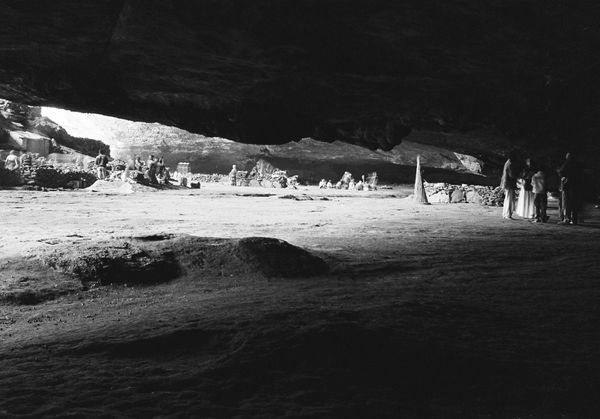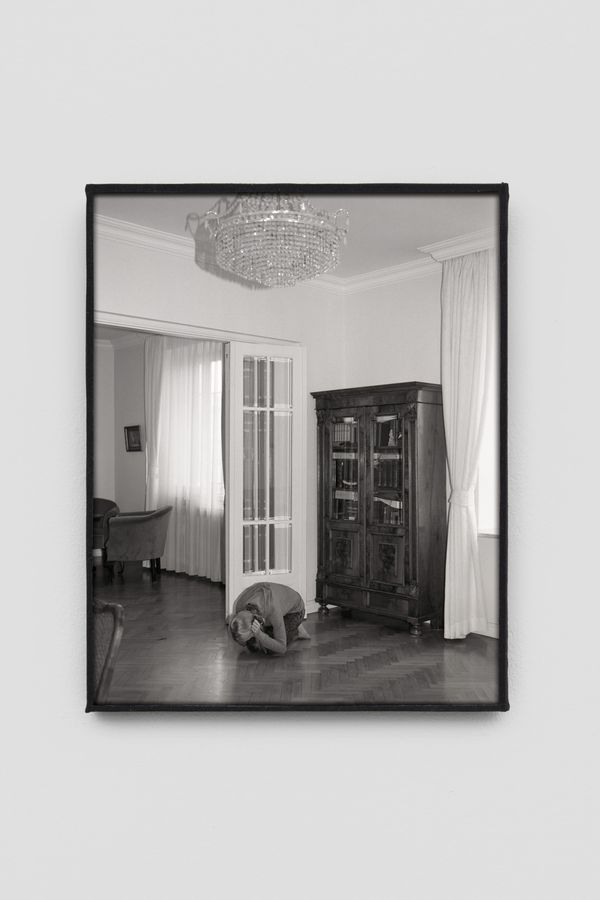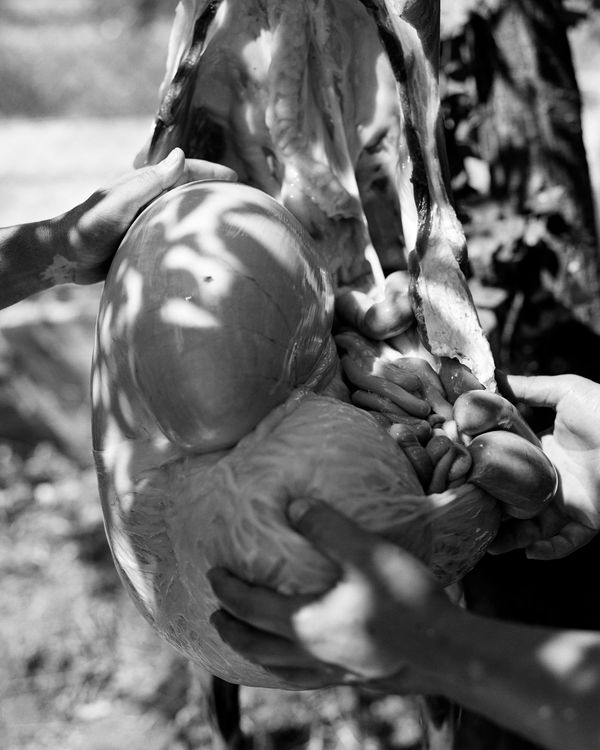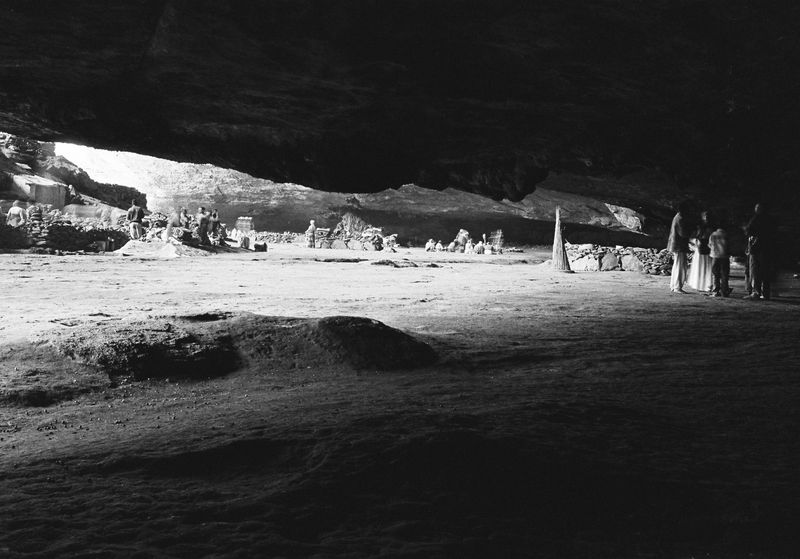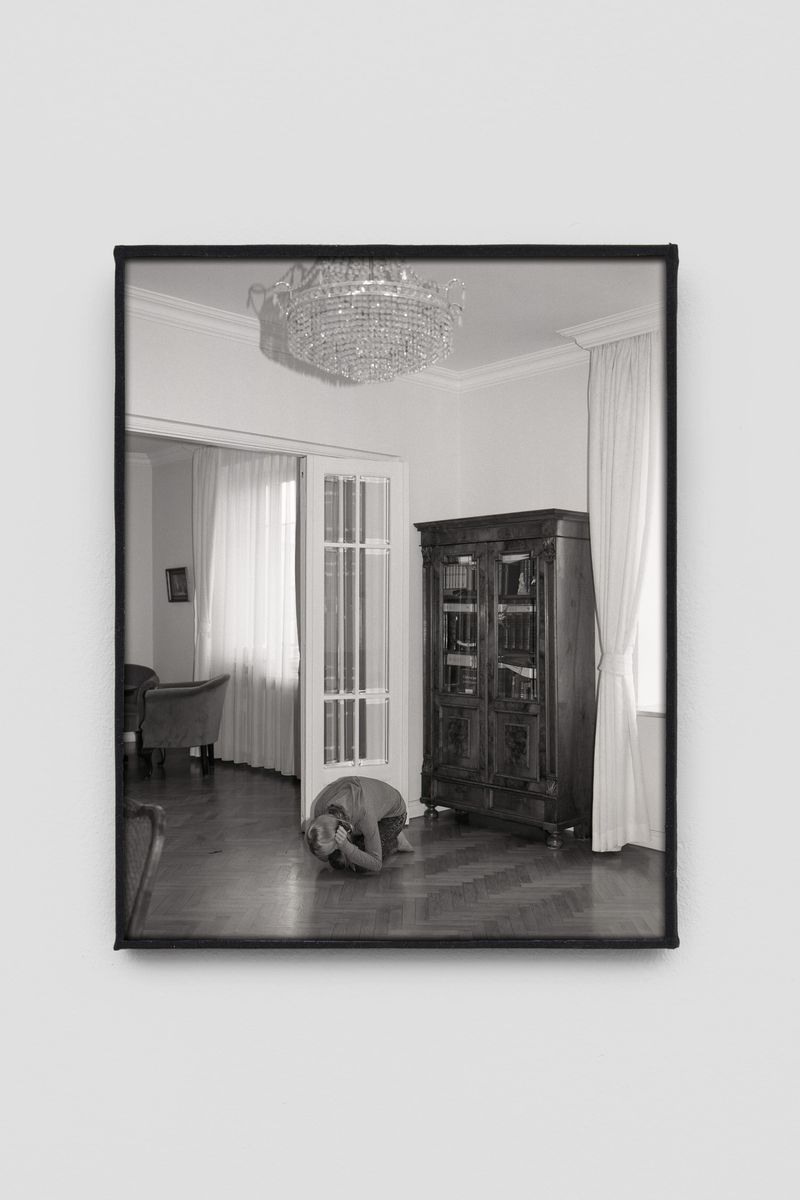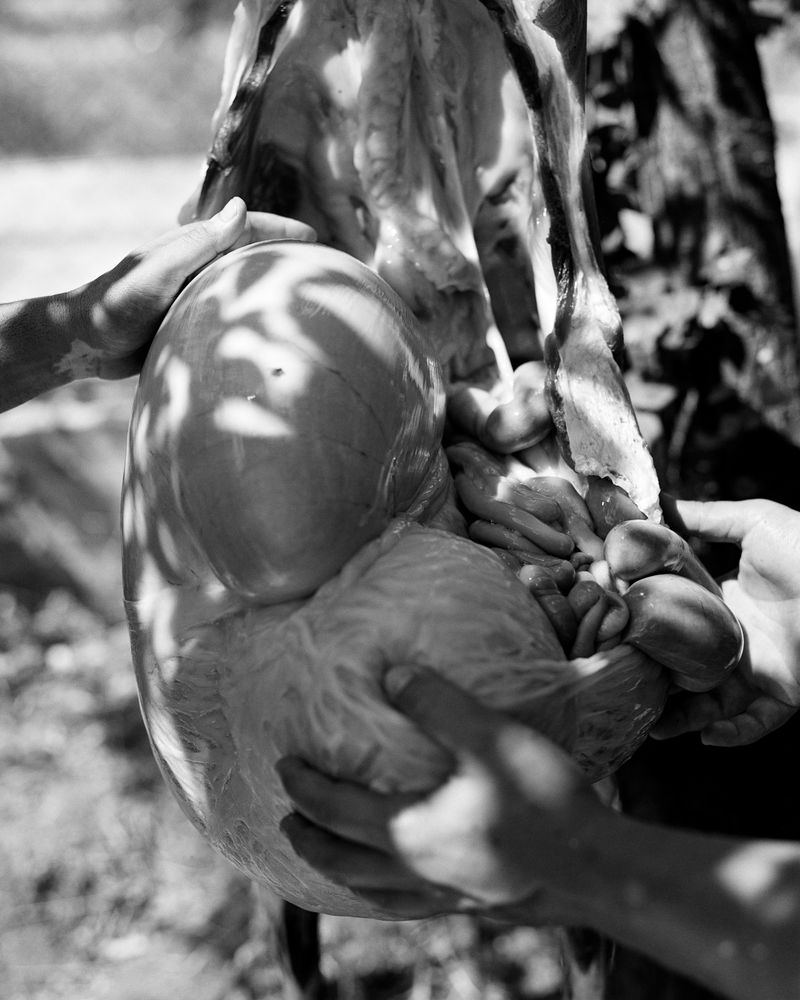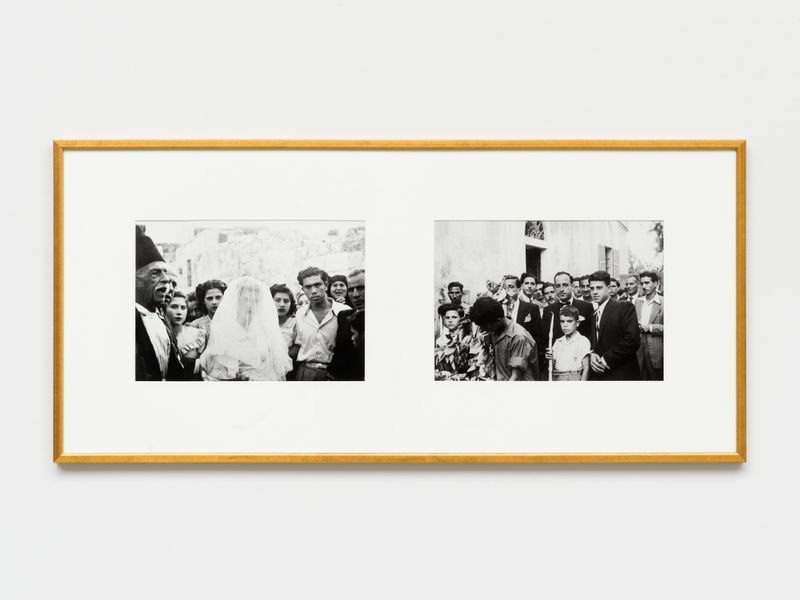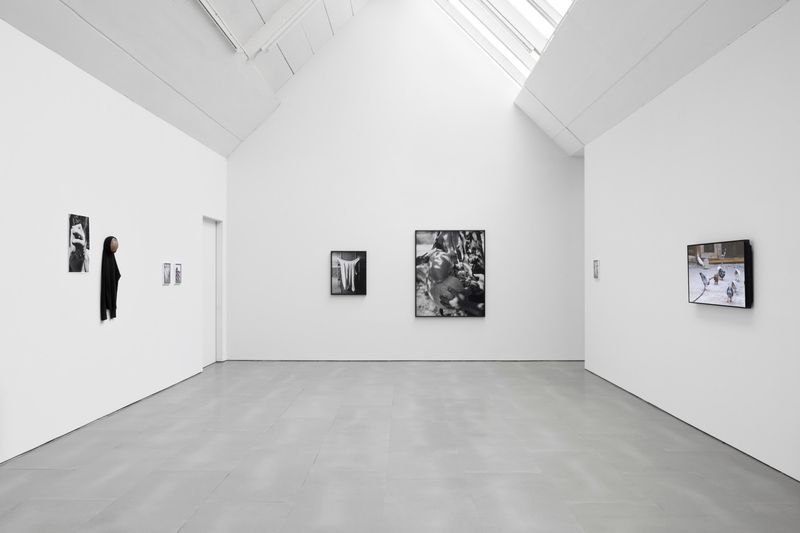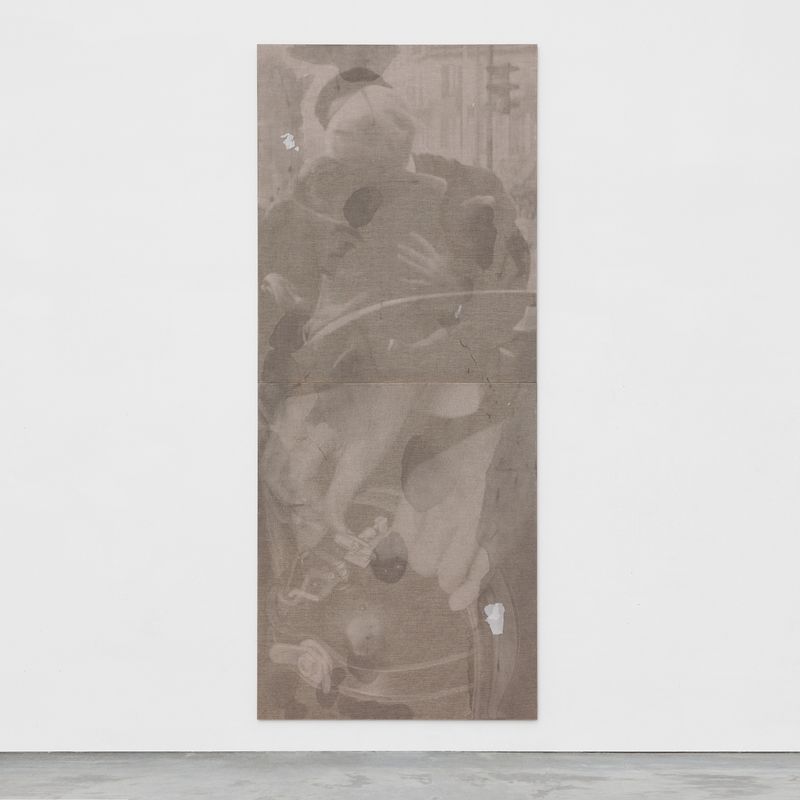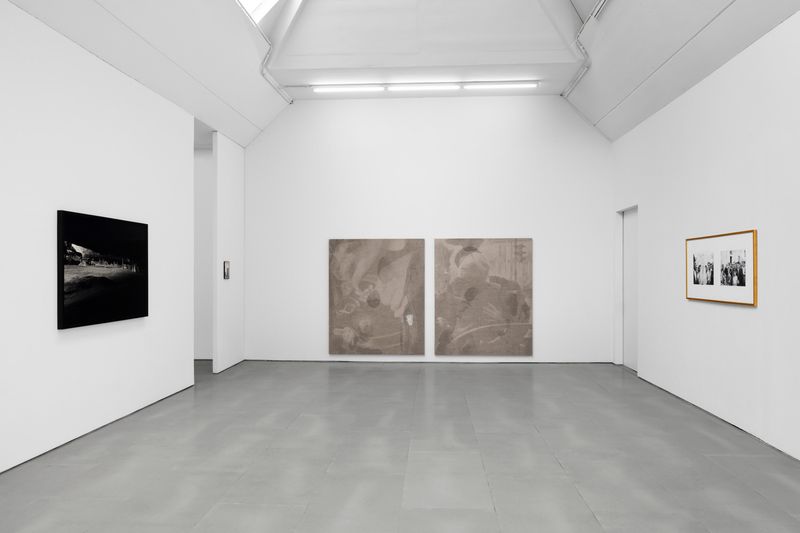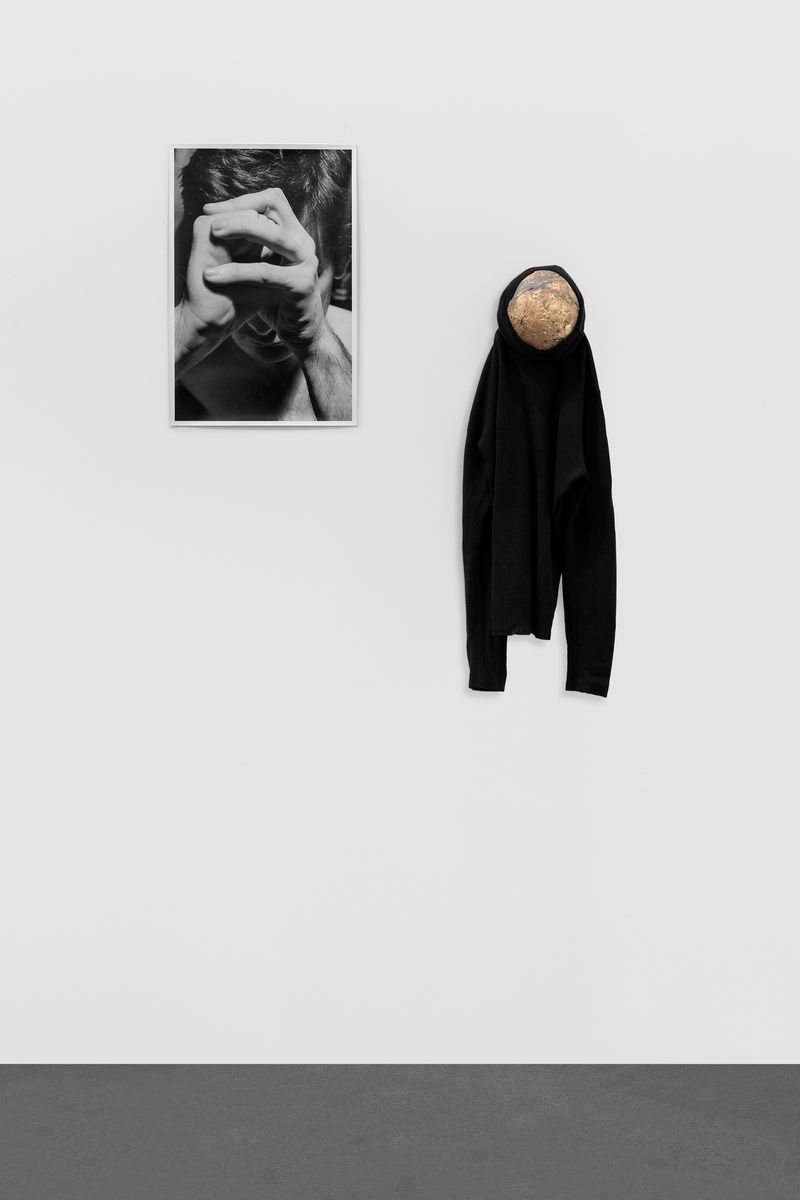The Invisible Structure Of The Universe: Part II at Carlier | Gebauer
-
Opens26 Apr 2024
-
Ends22 Jun 2024
-
Link
- Location Berlin, Germany
Carlier | Gebauer, Berlin, is pleased to present the group exhibition The Invisible Structure of the Universe: Part II with works by Michel François, Dor Guez, Abdulhamid Kircher, Santu Mofokeng, Nida Sinnokrot, Joanna Piotrowska and Ian Waelder.
Overview
The exhibition invites to reflect on ritual as a given, and as a metaphor in its relationship to the work of art, specifically in the form of photography. To begin with - as famously formulated by Walter Benjamin - the work of art emerges from the ritual. The oldest works of art fulfilled a ritual function. These objects were a direct and central component of once magical, later religious traditions, customs and rites. It was only with the invention of a means of reproducing them with photography, that the artwork gained its independence and freed itself from its “parasitic existence in ritual”, as Benjamin describes. On the one hand, photography liberates the artwork from the ritual, but on the other hand, it can also make it its subject in an indirect recourse. The formal actions of a ritual follow fixed and repeatable patterns, convey meanings, values and convictions and create a community. If the ritual contains all of this, ambivalences and ambiguities open up within its framework. Without being a contradiction, it could be an expression of communal solidarity, resistance or oppression and at the same time an individualized relationship to oneself. It can be site-specific, but it can also create a home, independent of a place. It can do many things and its structure holds our universe, our lives, together.
Ian Waelder’s series From a series of portraits to a Monstera Plant Given To My Parents On The Day I Was Born, Still Alive And Growing Today In Their House (2023) follows a personal ritual. Each time he returns to his parents’ home, he photographs a plant that is just as old as he is. Waelder gives the viewer an insight in his personal ritual and creates a shared intimacy without revealing much about himself. We know neither the reasons for Waelder’s visits nor how they he feels about them, we are only confronted with the permanence of a structure that is maintained by the ritual. Since Waelder uses analog film, the process of taking the image becomes the constitutive moment of the work. In their entirety, each of the individual points in time marked by a photograph combine to form a continuum that punctuates the flow of time and yet makes it tangible even in the first place. The ephemeral passage of time becomes a continuous form, and Waelder resumes this structure with each return home. He thus as well returns again and again to the ritual. The place of this ritual is home.
Some rituals draw substantially on a certain place, which is almost as constitutive for the ritual as the individual themselves. People have been visiting Motouleng Cave in South Africa for centuries, and the place has a special spiritual significance, especially in the indigenous South African community. Santu Mofokeng himself travelled to this site with his brother, who was seriously ill, hoping for his healing. In Inside Motouleng Cave – Clarens (1996), the cave can be seen as an opening to its surroundings, with the visual axis emerging from its interior.
Abdul Kircher chooses photography as a means - and perhaps also a remedy - of dealing with an intergenerational trauma that has shaped his family. His father is a central and contradictory figure in Kircher’s life. To uncover their relationship, he travels together with his father to their shared home near Antalya in Turkey, they travel together to his father’s family home near Antalya in Turkey. This life differs from Kircher’s life in Berlin and New York in its attachment to tradition, but he also discovers overlaps in emotional aspects. The work Untitled (RfW#65) (2018) shows the ritual sacrifice of a sheep in an abstract manner, the sheep’s innards are held by the hands of his father and uncle. After a near-death experience of their common father, Abdulhamid’s grandfather, the family’s sheep was sacrificed to mark his survival.
The painting Stain & Repair (Handle With Care) (2023) by Ian Waelder is based on photographs, which he further alienates, adds layers to and covers them with linen. They show actions that are contradictory and yet ritualized in their own way, such as the intimate embrace of a couple and hand movements maintaining an object. Waelder these pictures in his research; they have no straightforward connection to his family and yet attempt a cautious approach to their history.
Dor Guez’s work Samira and Jacob’s Wedding (2009) is based on a series of photographs taken by Geuz’s grandmother documenting the celebrations of her wedding. The white dress and veil make the wedding immediately and almost universally recognizable as such. This wedding took place in 1949 and was the first Christian-Palestinian wedding in Lod after the expulsion of the majority of the Arab population from the city. If marriage, the entry into which the ritual of the wedding marks, is criticized as a patriarchal institution from a feminist perspective, an ambiguity arises in this case. For at the same time, this wedding asserts an identity, upholds it in the repetition of the ritual, despite the oppression that this upholding brings.
Nida Sinnokrot’s work Flight Jalazone (2016) also testifies to a sense of belonging. Sinnokrot gathered the residents of the Jalazone refugee camp, which is located north of Rammalah, to let their pigeons fly together one evening. Each pigeon was given a small LED light so that it could be recognized in the twilight. Raising and flying pigeons is a traditional and popular hobby for many Palestinians. Sinnokrot’s intervention created another ritual to add to the existing one: pigeon fanciers continue to equip their pigeons with lights for their flights.
Joanna Piotrowska’s ambiguous photograph from the Self-defence series can be interpreted as an intervention in the existing, as a new ritual that acts precisely as a break with previous traditions. The person in the picture crouches on the ground, seeking protection and yet offering protection to herself.
Finally, Michel François’ work Untitled (2023) points to the range of the ritual, from its incompleteness, its everyday actions ritualized by recurring performance, to the rigid, highly aestheticized actions.
